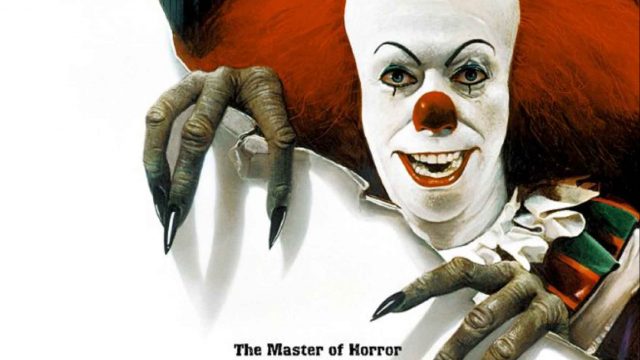Stephen King’s It is a story about friendship and magic and monsters. It is a coming-of-age story where kids face the personification of their fears, but also an introspective story about how adulthood is shaped by childhood trauma and how those adults find the courage to confront their past, which they thought they had left behind.
For those of you who are somehow unfamiliar with this story, It is about a group of adults who get called back to their hometown of Derry, Maine based on a promise they made when they were kids. What exactly this promise entailed and why it weighs so heavily on these character’s souls is revealed as the book goes on. Through 1000 pages, King takes the reader on a terrifying journey that dreamily drifts back and forth from the past, when these characters were children, to the present to detail a decades-long battle between a chosen group of individuals and a horrifying monster of unimaginable power.
Or I suppose I could say this is simply the Stephen King book with the killer clown.
Everyone knows who Pennywise the Clown is. You don’t need to have read Stephen King’s 1000+ page behemoth of a novel or seen the various screen adaptations to know who Pennywise is. Pennywise the Clown has invaded popular culture and become a horror icon. The most recent film adaptations were very popular and 1990’s miniseries scarred the minds of young children everywhere, all thanks to Tim Curry’s wonderful performance as the infamous clown.
It’s interesting the impact the 1990 miniseries has had on people, given it isn’t that great. Now, don’t get me wrong. For what it is, it’s a solid piece of entertainment. But the adaptation was always going to have an uphill battle adapting one of the biggest and most terrifying, violent and brutal books by the biggest name in horror for a 1990 network TV miniseries. It was obviously going to lose something on its road to the small screen.
While the miniseries doesn’t even dare to go to some of the places the book does (there are no flying leeches sucking out people’s eyes, for instance), there are still some very effective moments. I will never not be freaked out seeing young Bill’s photo album open itself in a flurry of pages to a picture of his dead brother Georgie, then seeing blood gush out from around the picture. I also love the moment when young Beverly Marsh witnesses blood explode from her bathroom sink only to discover her father can’t see any of it. And the image of a clown in a storm drain offering a balloon to a young child will forever be iconic.
The miniseries keeps the structure of the novel with the shifting timeframe from the present of the ’90s to the past of the ’50s, where we witness the children start to bond with each other and see their encounters with Pennywise. The kid sections really are the best part of the miniseries (much like the book) and for any adaptation of King’s It to work, the kids need to be believable. It isn’t a coincidence that the best part of the miniseries is the part that features the child actors more prominently. The young actors (who include Emily Perkins, a young Seth Green and Jonathan Brandis, who had to have been a young teen heart-throb at the time) all feel believable together. Not that the adult actors are bad. There are some good actors in the roles (John Ritter, Annette O’Toole, Harry Anderson, and Richard Thomas) but what do the adult actors really do in the miniseries? They sit around and talk a lot, have a very corny bike riding montage, and go up against a fake-looking giant spider.
The two-part It miniseries is a strange beast. Partly held back by adapting an incredibly violent novel for network TV and some less-than-stellar writing and dated special effects, Stephen King’s It is really remembered for one thing – Tim Curry as Pennywise the Dancing Clown. All the actors do a fine job (especially the young ones), but Tim Curry elevates the miniseries. For all its flaws, it’s very entertaining, and there is one thing you will know for sure while watching it –
You’ll all float down here.


